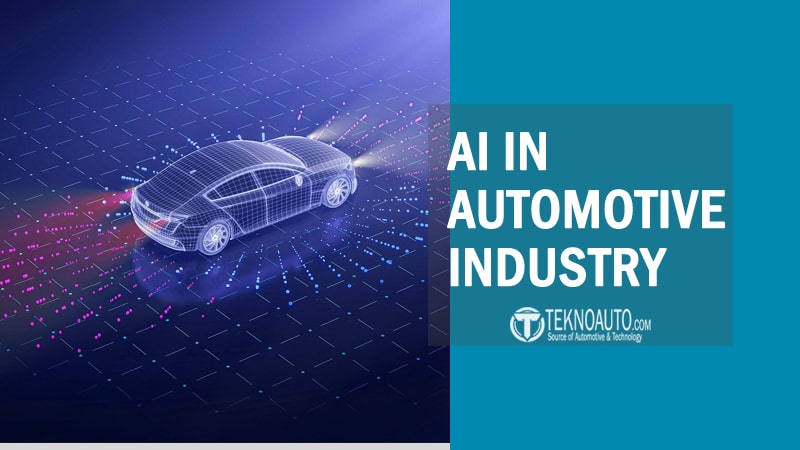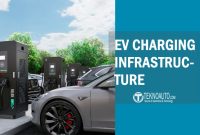Artificial intelligence in automotive industry is no longer a futuristic concept—it’s already driving change on factory floors, inside the dashboard, and across the world’s highways. From vehicles thalt analyze traffic patterns in real time to production lines that detect flaws before humans can, AI is quietly becoming the new engine behind automotive innovation.
The transformation didn’t happen overnight. Over the past decade, automakers have steadily integrated AI technologies to improve everything from manufacturing efficiency to driver safety. What once started as basic cruise control has evolved into systems that assist drivers, predict maintenance needs, and even take over control entirely.
But how exactly is artificial intelligence shaping the way cars are built, driven, and experienced? What are the real-world applications beyond the hype? And where is this road headed as AI becomes more capable and connected?
In this article, we’ll break down the real impact of AI in the automotive sector—from the factory floor to the driver’s seat—revealing how this technology is not only changing vehicles, but also the entire concept of mobility itself.
Understanding Artificial Intelligence in the Context of Automotive
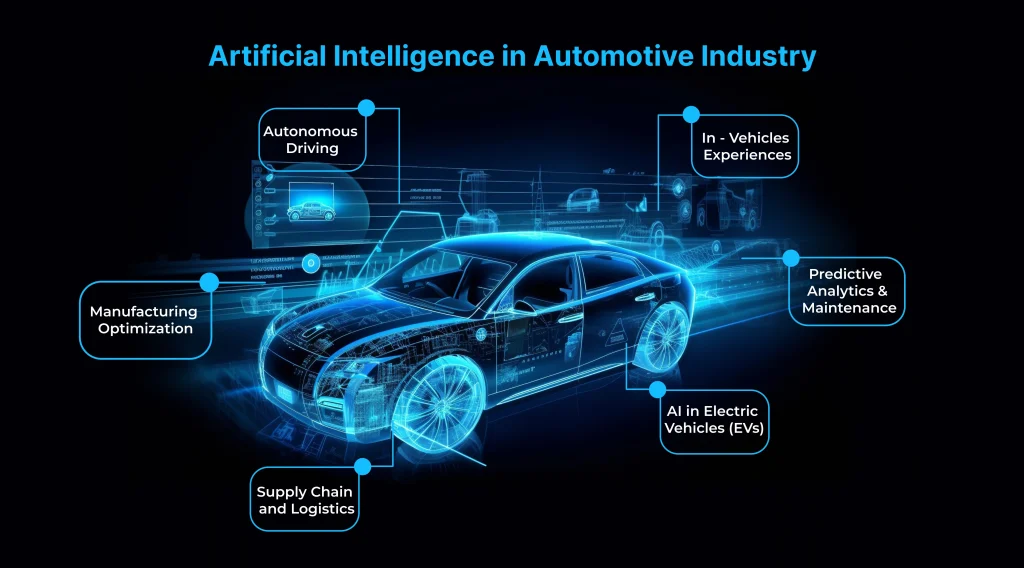
Artificial intelligence in automotive industry is not just about making cars smarter—it’s about rethinking how vehicles are designed, built, and used. To fully grasp its role, it’s essential to understand how AI fits within the unique environment of automotive systems.
Unlike general-purpose AI used in digital assistants or online platforms, automotive AI operates in high-stakes, real-time environments. Vehicles must analyze their surroundings, make decisions in milliseconds, and coordinate with countless mechanical and electronic components—all while ensuring passenger safety and regulatory compliance. This demands a specialized form of intelligence that goes beyond traditional programming.
In the automotive context, AI typically combines several disciplines: machine learning for pattern recognition, computer vision for environment sensing, natural language processing for voice interfaces, and predictive analytics for anticipating driver behavior or mechanical issues. These technologies are not isolated—they work together in complex systems designed to enhance every aspect of driving and manufacturing.
For instance, an AI-driven camera system doesn’t just detect obstacles; it classifies them—pedestrian, cyclist, vehicle—and feeds that data to another algorithm that determines whether to brake, steer, or alert the driver. In manufacturing, AI monitors machinery and assembly lines, predicting equipment failures before they happen and ensuring product quality through image recognition.
As AI continues to evolve, its integration in automotive design becomes more seamless, moving from background support to core functionality. What once required human oversight is now being automated—setting the stage for fully autonomous vehicles and intelligent, connected ecosystems.
Core Applications of Artificial Intelligence in Automotive Industry

Artificial intelligence in automotive industry is being applied across every layer of the ecosystem—from design studios and manufacturing floors to vehicle interiors and city infrastructure. These applications go far beyond self-driving cars, touching virtually every function of a modern automotive company.
1. Autonomous Driving Systems
Perhaps the most high-profile application, autonomous driving relies heavily on AI to interpret sensor data, make decisions, and control the vehicle. Machine Learning in Self-Driving Cars models enable systems like Tesla Autopilot, Waymo, and GM’s Cruise to detect objects, predict movements of pedestrians or other cars, and plan safe routes—all in real time. AI is essential for achieving the various SAE-defined levels of driving automation.
2. Advanced Driver Assistance Systems (ADAS)
AI also powers ADAS features that are now common in many consumer vehicles. These include lane-keeping assist, adaptive cruise control, automatic emergency braking, and parking assistance. While not fully autonomous, these systems use AI to improve safety and reduce driver workload by handling repetitive or complex driving tasks.
3. Predictive Maintenance
Using AI, manufacturers and fleet managers can analyze data from sensors to predict when a part is likely to fail. This allows for timely maintenance, reducing downtime and preventing costly breakdowns. AI can learn from usage patterns, environmental conditions, and wear rates to provide highly accurate forecasts that traditional systems cannot match.
4. AI in Automotive Manufacturing
On the production line, artificial intelligence is revolutionizing the way vehicles are built. AI-enabled robots perform tasks like welding, painting, and assembly with extreme precision. Computer vision systems inspect components for defects, while algorithms optimize workflows to reduce waste and increase efficiency. AI also supports supply chain logistics by forecasting demand and identifying bottlenecks.
5. In-Vehicle AI for User Experience
AI is transforming the driving experience itself. Voice assistants like Mercedes-Benz’s MBUX or BMW’s Intelligent Personal Assistant use natural language processing to interact with drivers and control vehicle functions. AI personalizes everything from climate settings to infotainment preferences, creating a smarter, more intuitive environment.
6. AI in Traffic and Navigation Systems
AI helps vehicles—and entire transportation networks—move more efficiently. Navigation apps powered by AI analyze real-time traffic data to suggest the fastest routes. Smart traffic management systems in urban areas use AI to adjust traffic signals dynamically, reducing congestion and emissions.
Table: Core Applications of AI in Automotive Industry
| Application Area | Description | Example Use Cases |
|---|---|---|
| Autonomous Driving | AI enables perception, decision-making, and control for self-driving vehicles. | Lane keeping, obstacle avoidance, autonomous taxis |
| Driver Assistance Systems | Enhances safety and convenience through real-time monitoring and alerts. | Lane departure warning, adaptive cruise control, blind-spot detection |
| Manufacturing Automation | Streamlines production lines using robotics and AI-driven quality control. | AI-based defect detection, predictive maintenance in assembly lines |
| Predictive Maintenance | Uses AI to predict vehicle part failures before they happen. | Battery health monitoring, engine performance prediction |
| In-Vehicle Personalization | Customizes user experience through behavior analysis and preference learning. | Voice assistants, infotainment recommendations, climate control preferences |
| Fleet & Traffic Management | Optimizes route planning and fleet efficiency using real-time AI data analysis. | Delivery route optimization, traffic congestion prediction |
| Cybersecurity | Protects vehicle systems from hacking and unauthorized access. | Intrusion detection, anomaly detection in ECU communications |
| Natural Language Processing | Enables voice-based control and in-car assistant interactions. | Conversational AI, voice commands for navigation or entertainment |
| Supply Chain Optimization | AI improves procurement, logistics, and inventory in automotive manufacturing. | Smart warehousing, demand forecasting, supplier risk analysis |
Benefits of Artificial Intelligence in the Automotive Industry
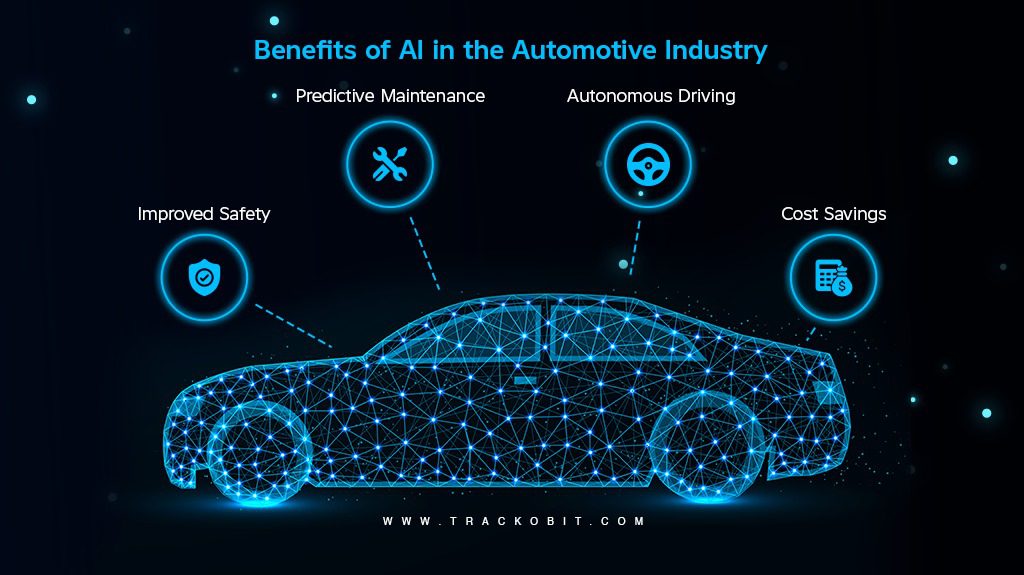
The integration of artificial intelligence in automotive industry is not merely a technological upgrade—it’s a strategic transformation that delivers tangible value across the entire automotive ecosystem. From increasing road safety to streamlining production, AI is driving measurable benefits that reshape how we experience mobility.
1. Enhanced Safety and Reduced Accidents
AI-powered systems like ADAS and autonomous driving platforms are significantly improving vehicle safety. By detecting hazards earlier, responding faster than human reflexes, and minimizing human error, AI contributes to fewer road accidents and fatalities. Features like automatic emergency braking and collision avoidance are direct outcomes of AI’s real-time decision-making capability.
2. Increased Operational Efficiency
In manufacturing, AI optimizes processes by reducing waste, identifying defects early, and streamlining production lines. Predictive analytics help manage inventory and forecast demand, while robotics powered by AI reduce cycle times and improve precision. These efficiencies result in faster production and lower costs—without compromising quality.
3. Personalized Driver Experience
AI adapts vehicles to suit individual drivers. From personalized climate settings and seat positions to intelligent infotainment suggestions and voice command accuracy, AI enhances comfort, usability, and satisfaction. It learns from past behavior to anticipate needs, making each drive more intuitive and enjoyable.
4. Better Maintenance and Cost Reduction
Through predictive maintenance, AI minimizes unexpected breakdowns and helps drivers or fleet managers plan repairs before failures occur. This reduces repair costs, extends vehicle lifespan, and enhances overall reliability—especially critical for commercial operations.
5. Sustainable and Eco-Friendly Mobility
AI helps optimize fuel usage and improve electric vehicle (EV) energy efficiency. Smart routing, eco-driving suggestions, and AI-managed battery systems contribute to reducing emissions and environmental impact. In manufacturing, AI also aids in sustainable resource management and energy savings.
6. Competitive Differentiation for Automakers
Adopting AI enables automakers to innovate faster and stay ahead in a rapidly changing market. From intelligent features in vehicles to AI-driven customer insights and marketing automation, the technology becomes a core enabler of competitiveness and brand differentiation.
Challenges and Limitations of AI in Automotive Industry

While the promise of artificial intelligence in automotive industry is vast, the road to full integration is not without significant hurdles. From technical limitations to ethical concerns and regulatory issues, the deployment of AI in vehicles and manufacturing environments comes with its own set of complexities.
1. Data Dependency and Quality
AI systems require massive volumes of high-quality data to function reliably. For self-driving vehicles, that includes data from sensors, cameras, radar, and real-world driving conditions. If the data is biased, incomplete, or inaccurate, AI predictions and decisions may become unreliable or even dangerous. Data quality is especially critical in safety-critical environments like autonomous navigation.
2. Complexity of Real-World Driving Scenarios
Despite remarkable progress, AI still struggles with edge cases—unusual or unpredictable events that don’t occur frequently in training data. Construction zones, erratic pedestrian behavior, or unusual weather conditions can confuse AI systems. This limits the deployment of fully autonomous vehicles, particularly in urban or mixed-traffic environments.
3. Cybersecurity Risks
As vehicles become more connected and intelligent, they also become more vulnerable to cyber threats. Hackers targeting AI-driven control systems could compromise vehicle safety or steal sensitive data. Securing AI systems requires robust encryption, intrusion detection, and constant updates—challenges that must be addressed across the industry.
4. High Development Costs
Developing, testing, and validating AI systems for automotive use is resource-intensive. It demands investment in data infrastructure, computing power, specialized talent, and simulation environments. For smaller companies or suppliers, these costs can be prohibitive, creating a barrier to entry and limiting innovation.
5. Ethical and Legal Uncertainties
AI decision-making raises complex ethical questions, especially when it comes to life-and-death scenarios in autonomous driving. Who is liable in the case of an accident caused by an AI system? Should AI prioritize passengers or pedestrians in a collision scenario? Current laws do not yet fully address these questions, and legal frameworks are still evolving globally.
6. Regulatory and Standardization Challenges
The lack of global standards for AI deployment in vehicles creates friction for automakers operating in multiple markets. Regulatory uncertainty slows down innovation, as manufacturers must adapt to fragmented rules or await clear guidance before deploying advanced AI features at scale.
Table: Key Challenges and Limitations of Artificial Intelligence in Automotive Industry
| Challenge | Description | Implications |
|---|---|---|
| Data Quality & Availability | AI models rely on massive, high-quality data, which is often limited or biased. | Reduced model accuracy, safety risks, poor generalization in real-world scenarios |
| Ethical & Legal Issues | Lack of clear frameworks for decision-making in complex or fatal situations. | Regulatory uncertainty, public distrust, delayed adoption |
| Cybersecurity Risks | Increased connectivity makes vehicles vulnerable to hacking and data breaches. | Compromised vehicle safety, privacy violations, brand damage |
| High Development Costs | Building and training AI systems requires extensive computing resources. | Barrier for small manufacturers, slower innovation |
| Sensor & Hardware Limitations | AI performance depends heavily on sensors like LiDAR, cameras, and radar. | Failures in poor weather or lighting, reduced reliability |
| Lack of Standardization | No global standards for AI implementation across automakers and regions. | Integration challenges, inconsistent safety benchmarks |
| Explainability of AI Decisions | Many AI systems act as “black boxes” without transparency. | Difficulty in debugging, trust issues, legal accountability concerns |
| Training in Rare Edge Cases | AI may not handle rare or unpredictable events effectively. | Increased accident risk, reduced system robustness |
Real-World Examples of AI in the Automotive Industry
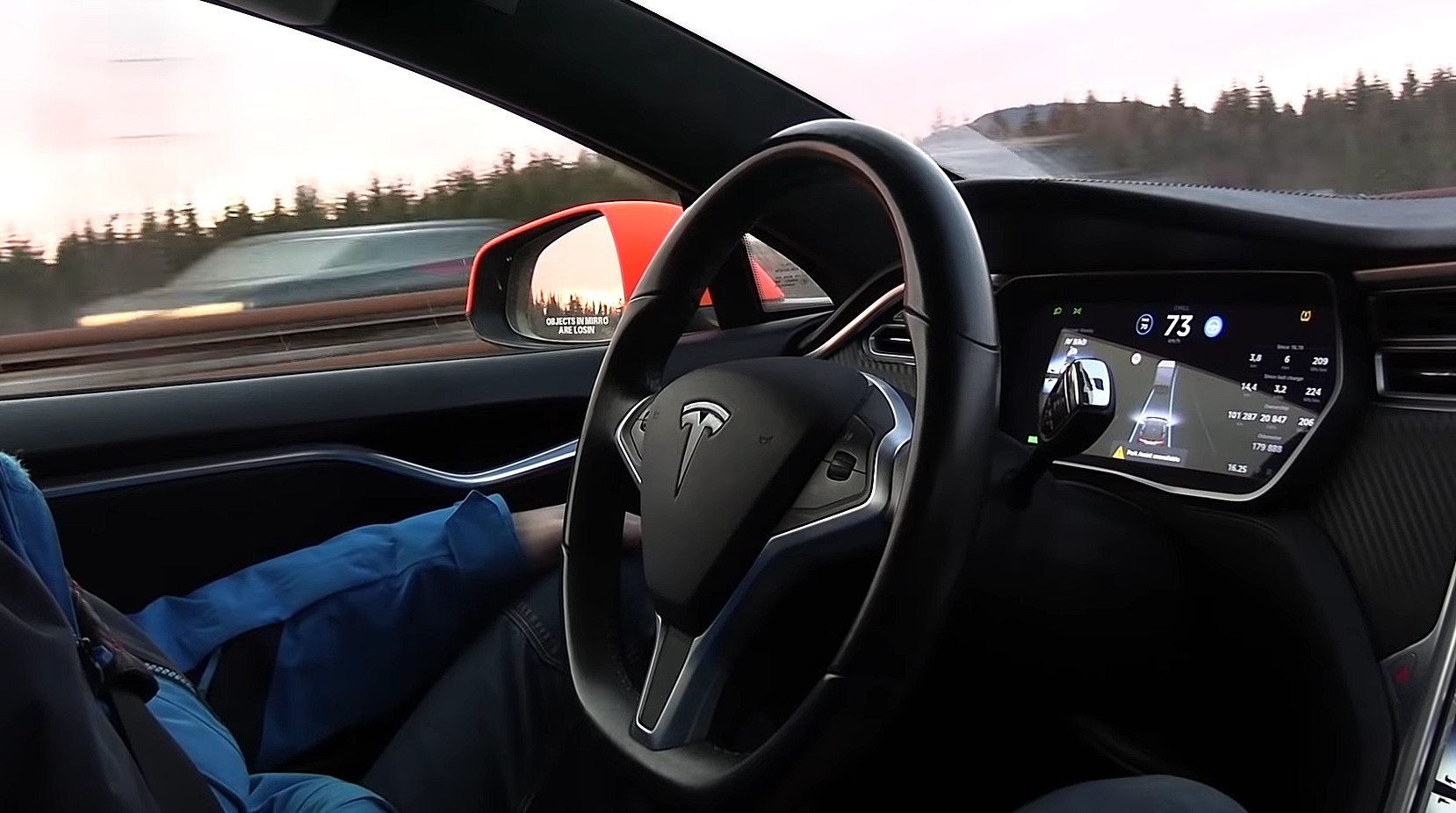
The application of artificial intelligence in automotive industry is no longer theoretical—it’s already in motion. Automakers and tech companies worldwide are integrating AI into real products and processes, resulting in smarter vehicles and more efficient operations. These real-world implementations provide a clear picture of how AI is transforming the industry today.
Tesla: Full Self-Driving and Autopilot
Tesla is one of the most prominent examples of AI-driven innovation in the automotive world. Its Full Self-Driving (FSD) system uses neural networks to process video feeds from cameras mounted on the vehicle, enabling lane changes, traffic-aware cruise control, automatic parking, and navigation on city streets. Tesla’s AI constantly learns from fleet-wide data, improving decision-making with every mile driven.
BMW: AI in Manufacturing and Predictive Maintenance
BMW uses AI extensively in its production plants, particularly in quality control and predictive maintenance. In its Munich factory, AI systems analyze images of components in real time to detect deviations or defects during assembly. Machine learning models also predict when machinery needs servicing, preventing downtime and optimizing production schedules.
Toyota: Human-Centric AI for Safety
Toyota takes a unique approach by focusing on AI that works with—not instead of—human drivers. Its Guardian system is designed to assist in dangerous situations while still keeping the human in control. It uses AI to monitor the driver and environment simultaneously, intervening only when necessary to prevent collisions or unsafe maneuvers.
Waymo: Autonomous Taxis at Scale
Waymo, a subsidiary of Alphabet, has launched fully driverless taxi services in Phoenix, Arizona. Its AI platform integrates Lidar Technology, radar, and cameras with deep learning algorithms that allow the vehicle to perceive and navigate complex urban environments. With millions of miles driven, Waymo has set benchmarks for AI-based autonomy and safety validation.
Volvo: AI-Powered Safety and Driver Monitoring
Volvo integrates AI to enhance its reputation for safety. Its vehicles feature AI-based systems that monitor driver attention, predict possible fatigue or distraction, and issue alerts—or even intervene if needed. Volvo is also using AI to develop future crash-avoidance systems based on real-time driving behavior and environmental conditions.
Hyundai and NVIDIA: Intelligent In-Car Experience
Hyundai has partnered with NVIDIA to bring AI-based infotainment and vehicle control systems to its new models. These systems offer personalized recommendations, natural language voice commands, and context-aware responses that learn and evolve over time.
Future of Artificial Intelligence in Automotive Industry
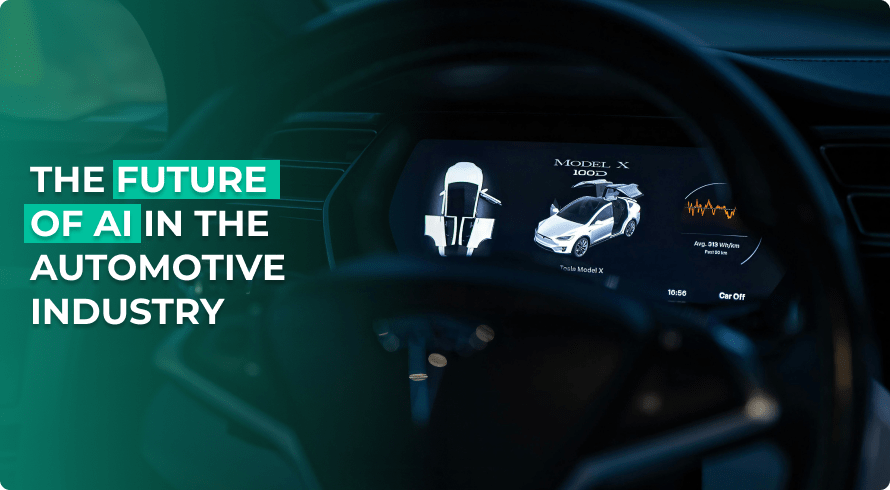
As artificial intelligence in automotive industry continues to evolve, its future promises even deeper integration into the way vehicles are built, operated, and experienced. From fully autonomous fleets to AI-powered personalization, the trajectory of AI in this sector is set to redefine mobility on a global scale.
1. Full Vehicle Autonomy at Scale
While many vehicles today feature Level 2 or Level 3 autonomy, the future will likely bring widespread deployment of Level 4 and even Level 5 autonomous vehicles. These cars will no longer need human oversight in defined conditions, and AI will handle all driving tasks with minimal intervention. This shift could revolutionize public transportation, last-mile delivery, and ride-hailing services.
2. AI-Driven Smart Mobility Ecosystems
The future of mobility isn’t just about smarter cars—it’s about smarter ecosystems. AI will play a central role in traffic flow optimization, smart city integration, and vehicle-to-everything (V2X) communication. Vehicles will collaborate with infrastructure and each other in real time, reducing congestion, emissions, and accidents.
3. Hyper-Personalized Driving Experiences
With more access to driver data and contextual inputs, AI will enable deeply personalized in-car experiences. From predictive climate control to personalized navigation suggestions and adaptive suspension settings, cars will evolve into intelligent companions tailored to individual user preferences and habits.
4. Autonomous Fleets and Mobility-as-a-Service (MaaS)
Fleet-based services like autonomous taxis and shuttles are expected to expand in urban environments, driven by AI. These fleets will operate efficiently, self-diagnose maintenance needs, and adapt dynamically to traffic demand. Combined with subscription-based access models, AI-powered MaaS may reduce the need for personal car ownership in the future.
5. Sustainable and Energy-Efficient Operations
AI will help automotive companies design more energy-efficient vehicles, optimize electric vehicle (EV) battery performance, and streamline production to reduce waste. In the EV space, AI will also play a crucial role in range estimation, smart charging, and battery lifecycle management.
6. Ethical AI and Transparent Decision-Making
As AI takes on more responsibility, especially in life-critical systems, transparency and ethics will become non-negotiable. The future will demand AI models that can explain their decisions, adhere to safety regulations, and comply with ethical standards that protect both drivers and pedestrians.
Conclusion
Artificial intelligence in automotive industry is not just enhancing how vehicles are built and driven—it’s reshaping the very fabric of modern mobility. From AI-powered assembly lines and smart driver assistance to fully autonomous navigation and predictive safety systems, the integration of AI is moving the automotive sector toward a future that is safer, smarter, and more sustainable.
As this transformation continues, the boundaries between car and computer will blur even further. Automakers, tech companies, and regulators will need to collaborate to ensure that these advancements are ethical, secure, and beneficial to society at large.
Whether you’re a driver, a developer, or simply an observer of the technological revolution, one thing is clear: artificial intelligence isn’t just coming to the automotive world—it’s already steering it forward.
FAQ About Artificial Intelligence in Automotive Industry
What is the role of artificial intelligence in automotive industry?
AI plays a central role in enabling autonomous driving, enhancing vehicle safety, optimizing manufacturing processes, and providing personalized driving experiences. It allows vehicles to perceive their environment, make decisions, and continuously learn from data.
How is AI used in car manufacturing?
Automotive manufacturers use AI for quality control, predictive maintenance, robotic automation, and supply chain optimization. AI systems detect defects during assembly, predict equipment failures, and help streamline production lines.
Are self-driving cars fully powered by artificial intelligence?
Yes, self-driving cars rely heavily on AI systems, particularly machine learning and neural networks, to interpret sensor data, make driving decisions, and navigate complex environments without human input.
How does AI improve vehicle safety?
AI enhances safety through features like advanced driver assistance systems (ADAS), real-time environment sensing, driver monitoring, and collision avoidance. These systems help reduce accidents by alerting or assisting drivers before dangerous situations occur.
What’s the future of artificial intelligence in automotive industry?
The future of AI in automotive industry includes fully autonomous vehicles, smart mobility ecosystems, hyper-personalized user experiences, and sustainable, AI-driven manufacturing. As the technology matures, AI will be a foundation for next-generation transportation.

